CAST
| Humphrey Bogart Had previously played typical “villain” roles- featured in gangster and detective films such as “The Maltese Falcon” and “High Sierra” where he had to be cynical, selfish and distrustful. Had acted for Warner Brothers before- he was in contract with them- but he had never once played a romantic lead before. This made him perfect for Casablanca as he could play the cold part of Rick Blaine from experience but also brought a vulnerability to him. It also developed his screen persona further, as a tactic from Warner Brothers. 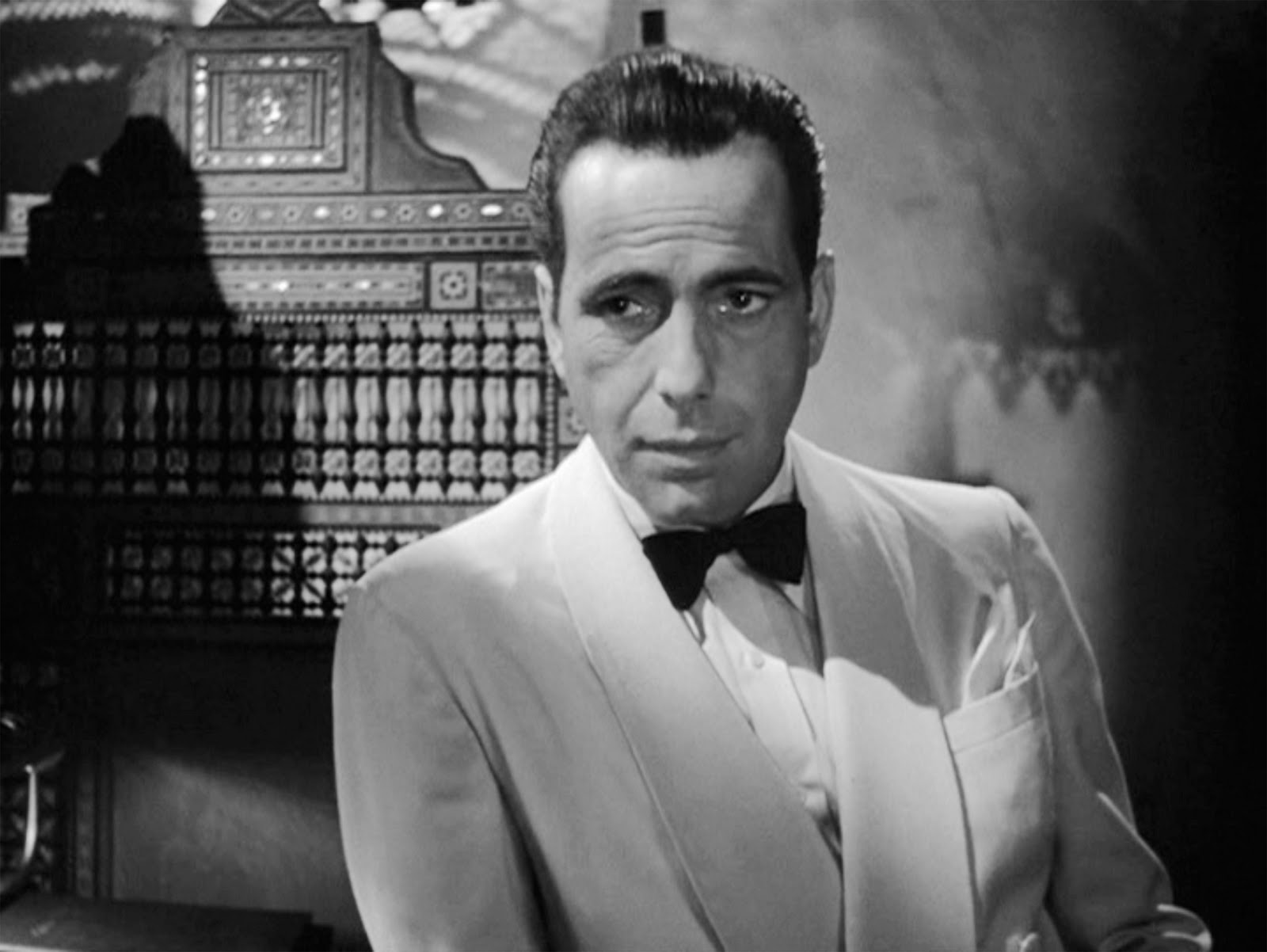 | Rick Blaine | |
| Ingrid Bergman A foreign actress. Ingrid was Swedish and spoke with an accent. In the original script she was American, however, they changed it so that her role could be more interesting.. and ‘exotic’, which heavily appealed to the American demographic in an era where a lot of WW2 films were being made at Warner Brothers. She was 26 when she was casted, and was very beautiful. She then worked on films such as “Gaslight”, “Notorious” and “Spellbound”. 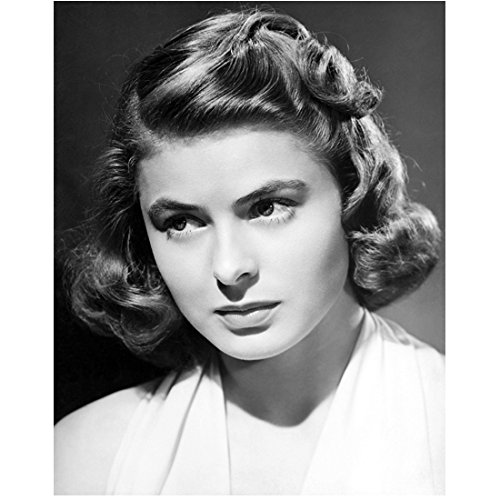 | Ilsa Lund | |
| Paul Henreid Before Casablanca, Henreid was already famous for his films and his television work, some including “Dead Ringer”, “Deception” and “Hollow Triumph”. He even got awarded two stars on the Hollywood Walk of Fame. However, after WW2, his contract with Warner Brothers was cancelled and he was left to his own devices. The Austrian-American moved on to directing and producing his own films. 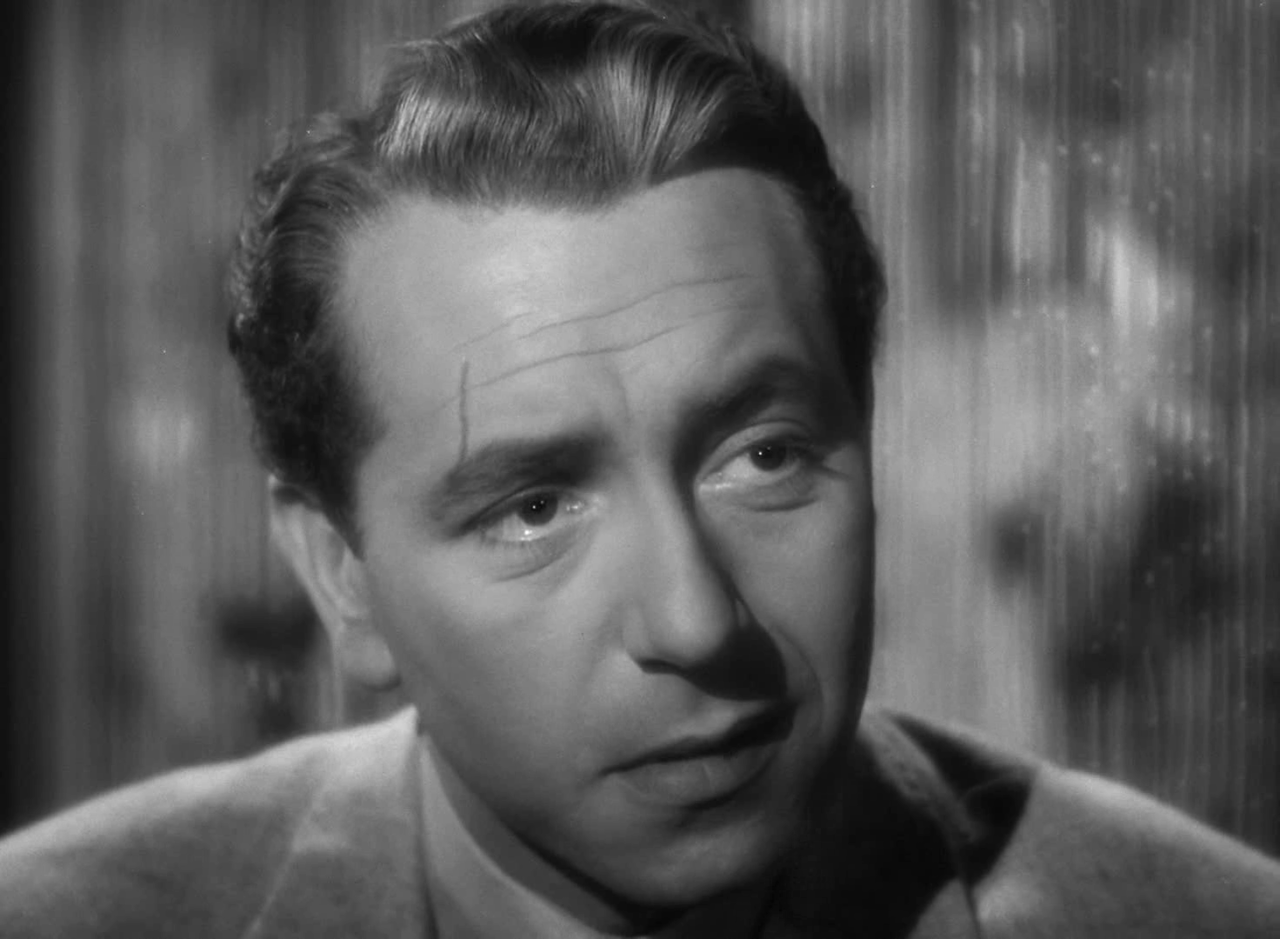 | Victor Laszlo | |
| Claude Rains Rains was a British and American actor whose career spanned almost seven decades, therefore he had already some experience before his role in Casablanca. Some of his prominent roles included Alexander Sebastian in “Notorious” and Erik in “Phantom of the Opera“. I think he was casted for his role in Casablanca as he had been famously known for his villainous portrayals and a reputation for an inability to do bad acting and a rich, trademark deep voice. 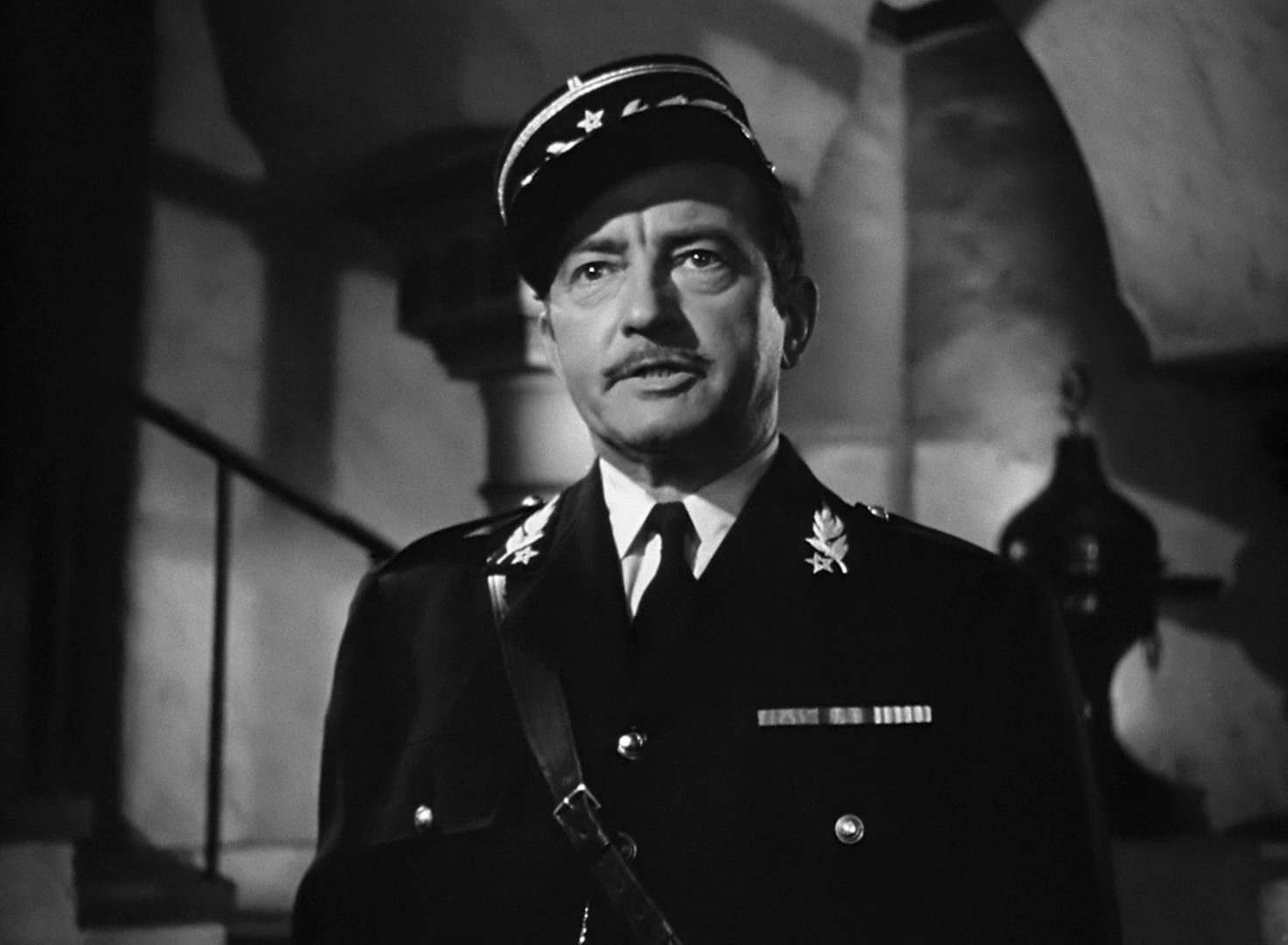 | Captain Louis Renault | |
| Conrad Veidt Despite not being a main character, Veidt, who was a refugee German actor that fled the Nazis with his Jewish wife, was the highest paid actor of Casablanca. His other prominent roles included “The Man Who Laughs”, “The Thief of Bagdad” and “Dark Journey”. It was argued that he was cast in Casablanca for his background and accent that gave an “authentic touch”. 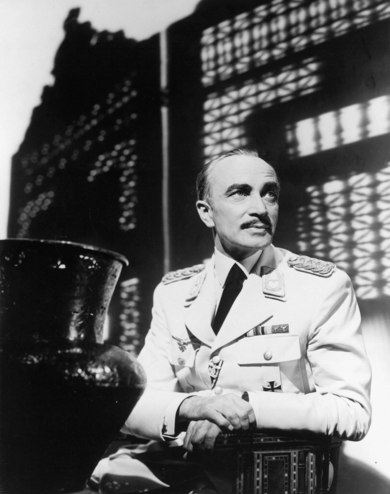 | Major Heinrich Strasser | |
| Sydney Greenstreet A British and American actor, Greenstreet had previously featured in five films already with Humphrey Bogart, however his acting career only began when he was 61 with the film The Fat Man. He also featured in Passage to Marseille and The Maltese Falcon. And despite his late start, he had a great run of significant motion pictures in Hollywood career lasting through the 1940s. 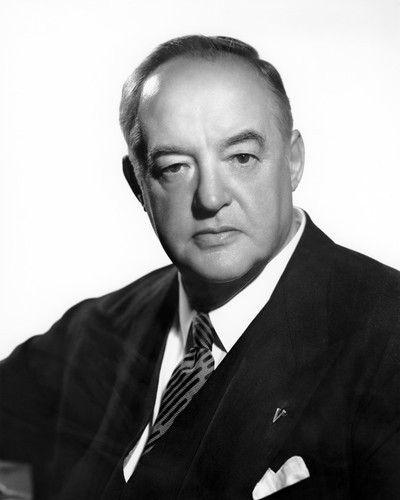 | Signor Ferrari | |
| Peter Lorre Peter Lorre was a Hungarian and American actor, active first in Europe and then in the US. He was known for his timid and devious character, and usually type casted for his accent as a sinister foreigner. His most famous role was international in the German classic film M (1931) directed by Fritz Lang. He was also in the infamous The Maltese Falcon and Passage to Marseille. So all around very iconic films. Lorre was contracted to Warner on a picture-by-picture basis until 1943 when he signed a five-year contract, renewable each year, which lasted until 1946.  | Ugarte | |
| S.Z. Sakall Sakall was also a Hungarian-American actor. He appeared in Christmas in Connecticut, In the Good Old Summertime and Never Say Goodbye. He was infamously known by the nickname “Cuddles” for his rotund body shape and overall cuteness, coupled with his caring personality, which he usually got type casted for. Sakall played numerous supporting roles in ‘classic’ type Hollywood productions including musicals and other films of the 1940s and 1950s. 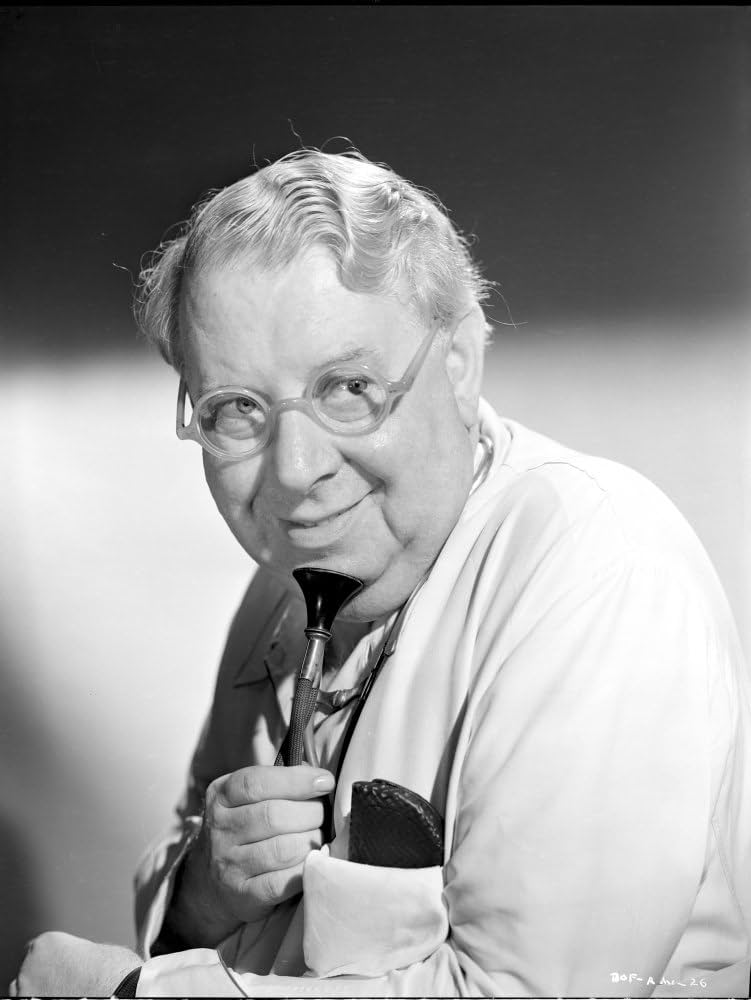 | Carl (as S.K. Sakall) | |
| Madeleine Lebeau She was a French film actress who appeared in American films. She also appeared in The Parisian, The Royalists, The Country I Came From and Gunmen of the Rio Grande. She was signed up to the Warner Brothers studio due to connections to Dalio, who helped her make her way to California. 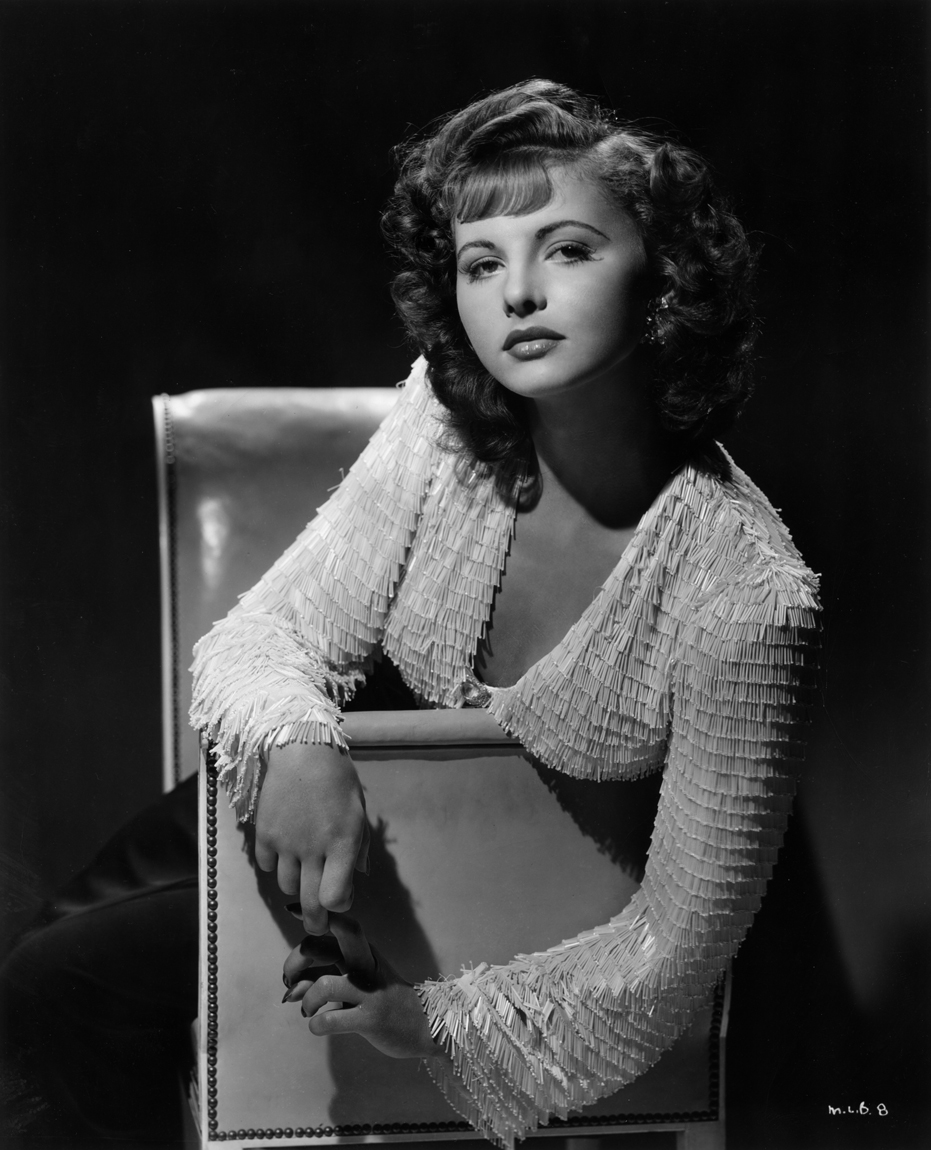 | Yvonne (as Madeleine LeBeau) | |
| Dooley Wilson Arthur “Dooley” Wilson was an American actor, singer and musician. He was most known for his role in Casablanca, where he sung the famous song “As Time Goes By”, but he also appeared in other film roles including Stormy Weather, My Favourite Blonde and Cabin in the Sky. He also led his own band in the 1920’s where he toured London and Paris. In relation to the Warner Brother studios, he was borrowed from Paramount Pictures for seven weeks at $500 a week per the studio custom of the day. He received his contract salary, $350 per week, and Paramount kept the balance. 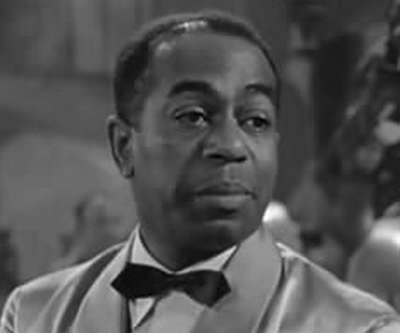 | Sam | |
| Joy Page Joy Page was an American actress most known for her role in Casablanca. However, she also appeared in films such as Kismet and Bullfighter and the Lady. She was related to Warner Bros as after her parents separated, her mother married Jack L. Warner who was the head of the studios. This landed her her role in Casablanca. 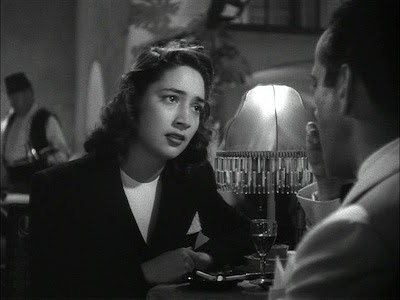 | Annina Brandel | |
| John Qualen Qualen was an American actor of Norwegian heritage who specialized in Scandinavian roles. Not many knew his name, although he did appear in films such as Angels over Broadway, Our Daily Bread and An American Romance. He began work at Warner Brothers in 1927 for the film Lights of New York where he earned $18,000. 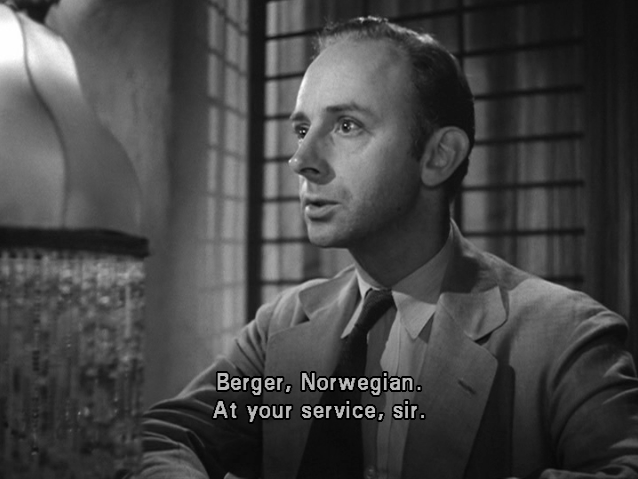 | Berger |
Casablanca Documentary (Notes)
Michael Curtiz was a Hungarian refugee who left his home in Europe to come to America. He made 173 films for Warner Brothers and worked in that studio for over four decades, all while his films had a wide range and variety. He was named as “one of the greatest” of camera and character movement, especially for his work with the camera dolly and zooms, an example being the scene where Rick emotionally thinks of his past with Ilsa. Curtiz broke away from the typical Hollywood substyle of fixed cameras and was known to experiment.
The extras cast for Rick’s bar was special because the majority of them were truly immigrants/refugees themselves, cast by Curtiz as he could empathise with them. Entering Casablanca and playing characters who were trapped and waiting desperately for visas meant that the extras could relate so that their roles in the film felt genuine and passionate with true emotions. An example of this is when they sing the French national anthem in the bar. Also some of the main cast, such as Peter Lorre, were also foreign. In total 34 different nationalities were represented both in and off camera.
The script for the film was originally called “Everybody comes to Rick’s” and was a play. It was delivered to Warner Brothers the day after Pearl Harbour, the Japanese bombing of an American naval base where hundreds of Americans died.
The producer for the film was Hal B. Wallis. Despite working for the Warner Brothers, he had quite a lot of autonomy, so even when the studio rejected Bogart as the lead man, Wallis persisted that it would be him. He worked hard to make sure the film appealed, and empathised with an American audience.
Some people criticized that because of this, Casablanca could be considered American propaganda.
- Casablanca was the perfect example of the “old studio style.”
- The cast and crew was the best of the 1940s
- Warner Bros produced many WW2 films at the time
- Dialogue and ending was made on a daily basis. Frustrated the stars, however made for a better film in the end.
Mise En Scene in Casablanca
Locations
The production of Casablanca took place in two regions: the Warner Bros lot in Burbank and the Metropolitan Airport at Van Nuys near Burbank. However, the film takes place in Casablanca, Morocco.
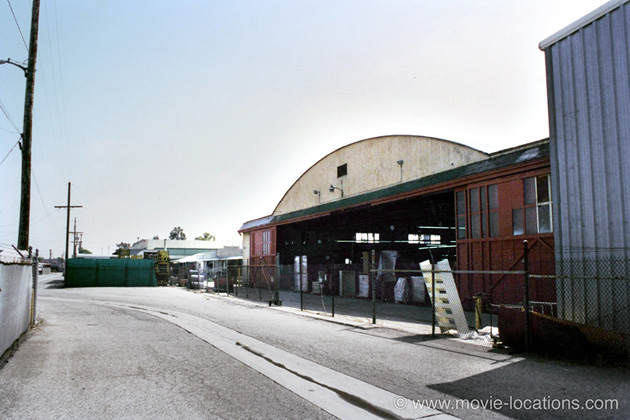
Sets
The sets in Casablanca genuinely looked like sets, which was a good thing in the Old Hollywood style. The artificiality of it made for great theatre. The sets for Casablanca suggested an exotic and dangerous place filled with intrigue and romance.
The whole movie was filmed with a soundstage and a few other scenes on a Warner Brothers backlot.
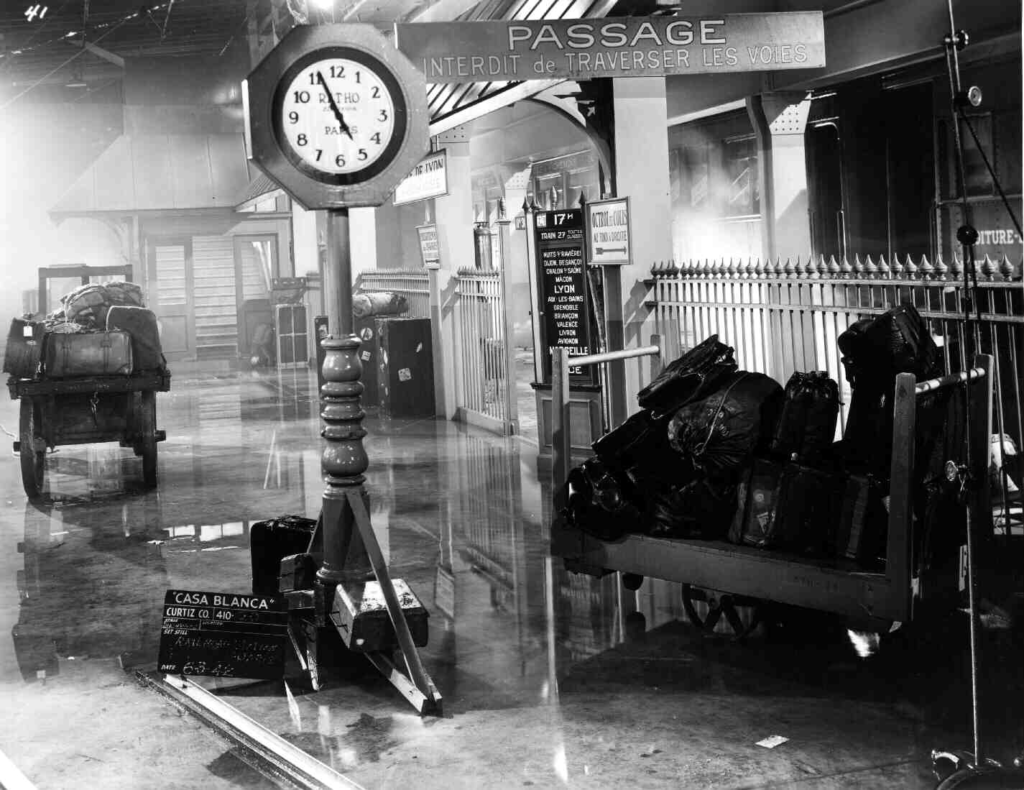
Costumes
The costume designer in Casablanca was Orry-Kelly, an Australian-American Hollywood costume designer. The costumes give the film an extra gleam; it was glamorous as no costume had any wrinkles and every character had their own colour palette that they wouldn’t deviate from. The heroes are in soft colours (Bogart in his white tuxedo). While Ilsa often appears to be wearing quite lightly coloured elegant outfits that consist of skirts or dresses.
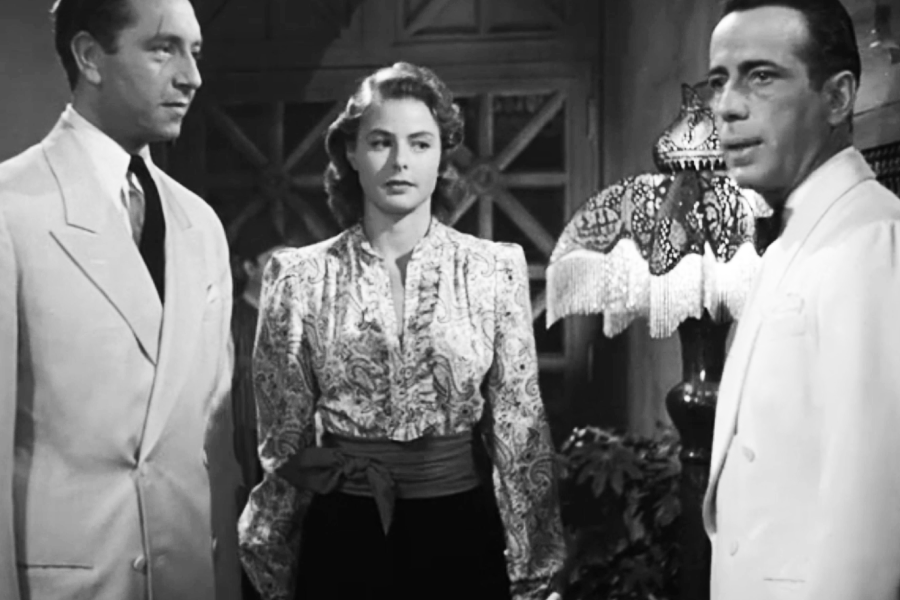
Props
The props seen in Casablanca are all meaningful. They help exaggerate the characters feelings, add detail to the plot, and sometimes move forward a narrative. Some examples of props seen at Rick’s bar.
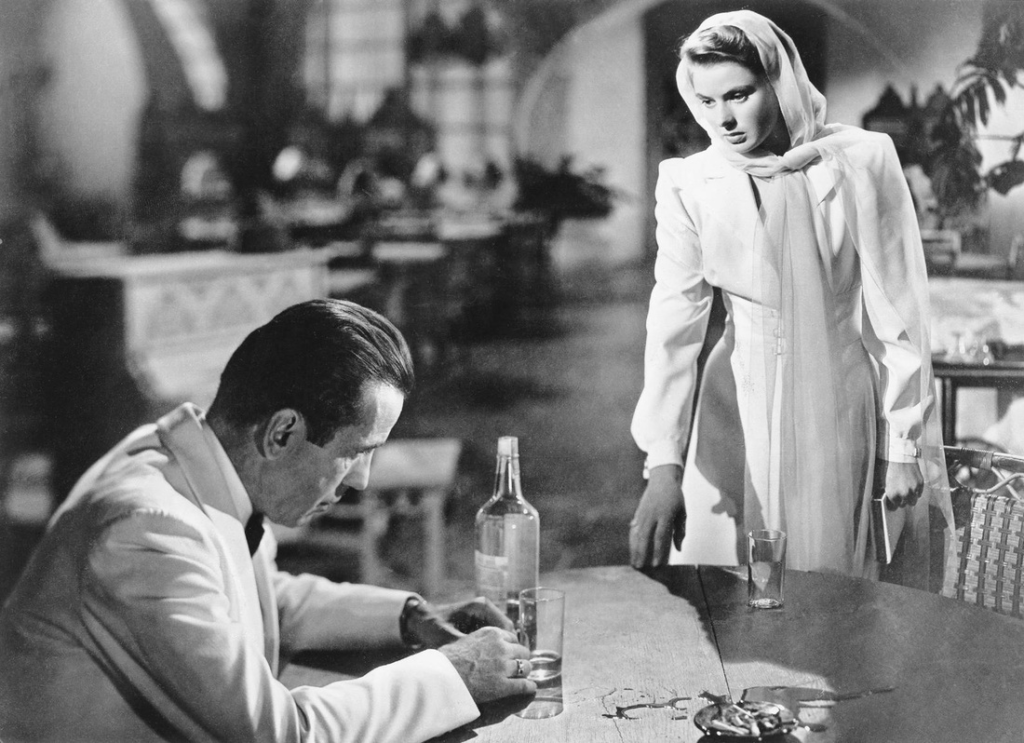
You can see fancy table lamps, exotic plants, expensive looking alcohol and even white table cloths. The purpose of this is to portray how exclusive and posh the bar is.
Editing in Casablanca
Casablanca is known for having an incredible pacing and also for managing to balance a variety of different tones within a sequence (such as tones of melodrama or comedy).
One sequence within the film that shows all the strengths of editing in Casablanca starts at the scene where Rick Blaine finds a way to help a young wife’s husband to win in roulette so that they’re able to buy their visas to leave.
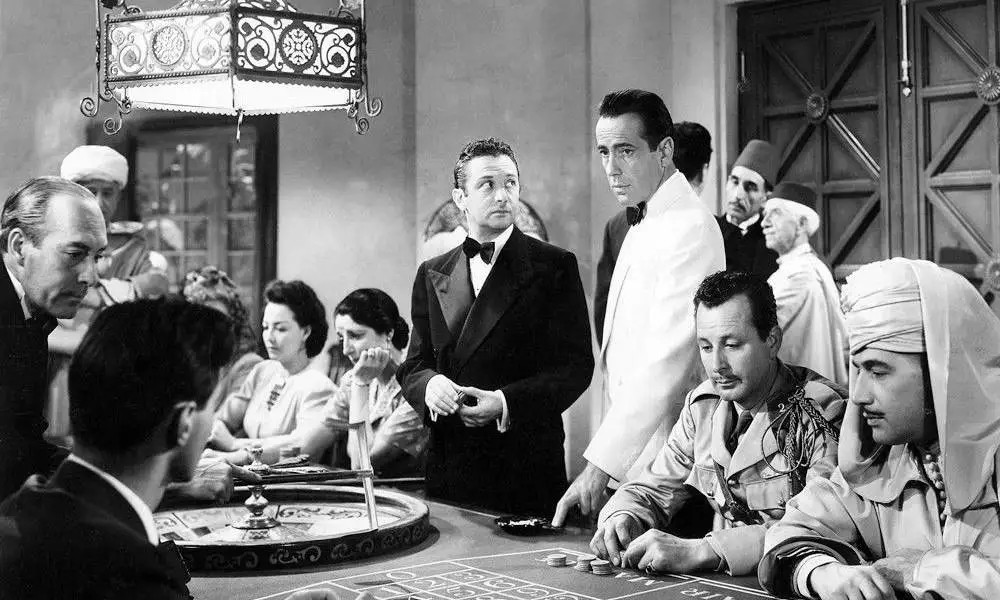
At the roulette table, the editors are able to give in glances to moments that show little pieces of information that are important, and also able to cut to different actor’s faces expertly to convey to the viewers who their character’s really are. An example being Annina Brandel’s close-up shot and then Rick’s.
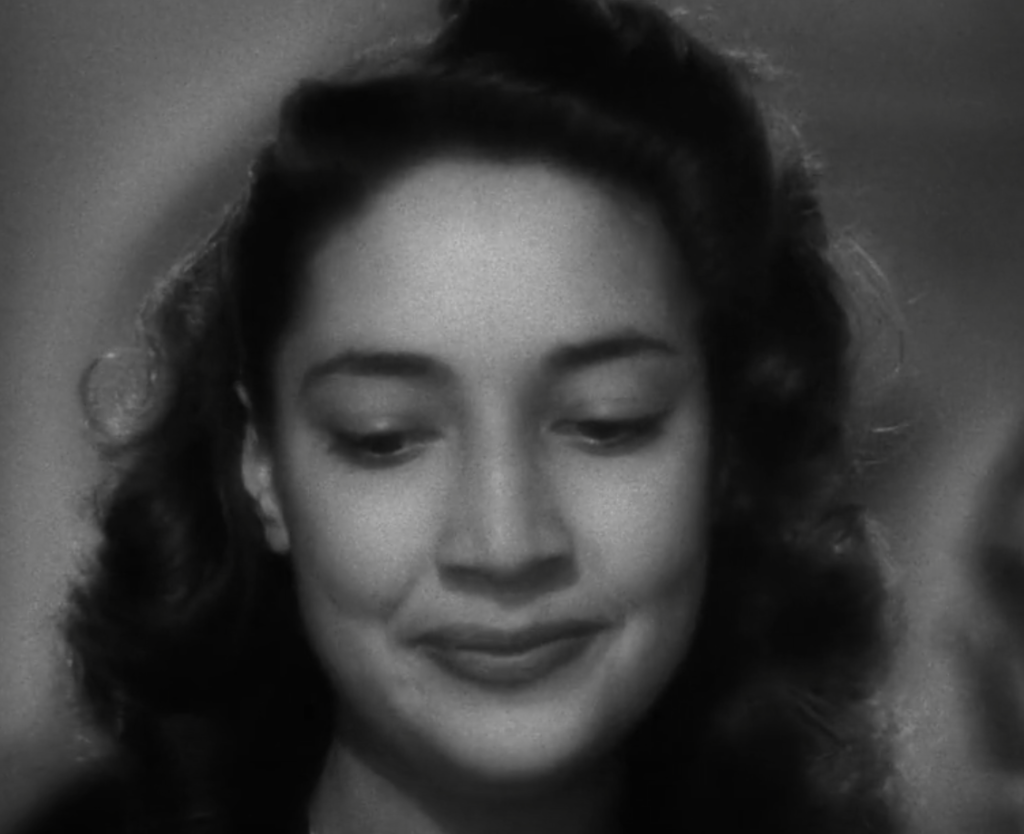
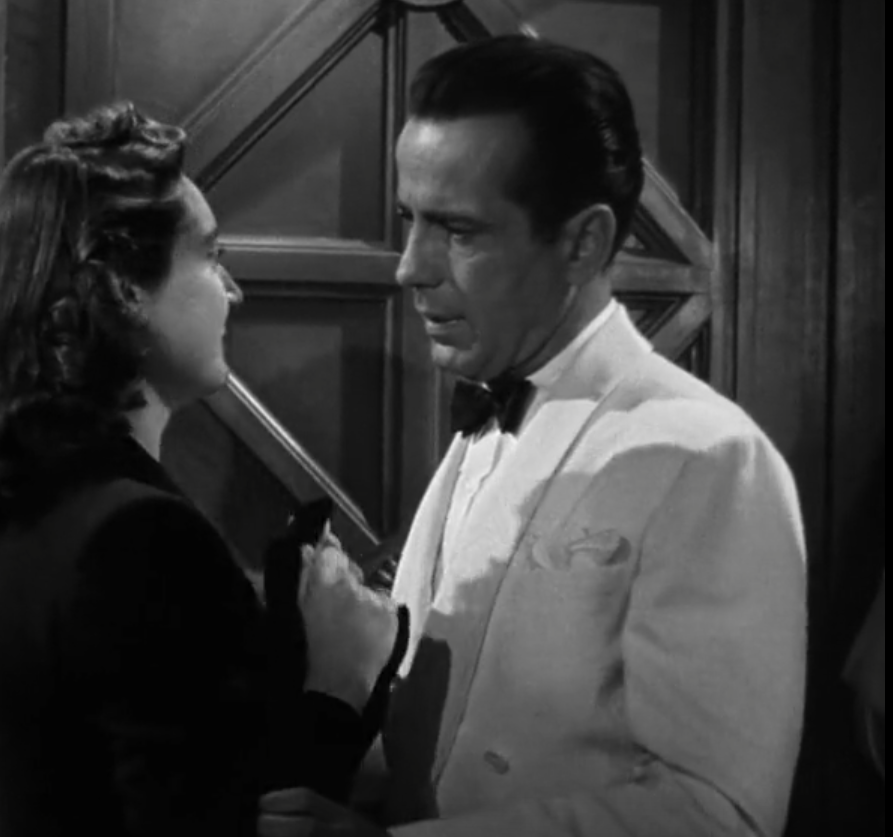
In this shot of Rick, the viewer sees a different side to Rick that they hadn’t seen before. From a stone-cold pragmatist who never emotionally involves himself in anything, to then a caring and more vulnerable Rick. After, the scene then cuts deeper into the sequence as Rick re-enters the bar to the Germans singing their anthem:
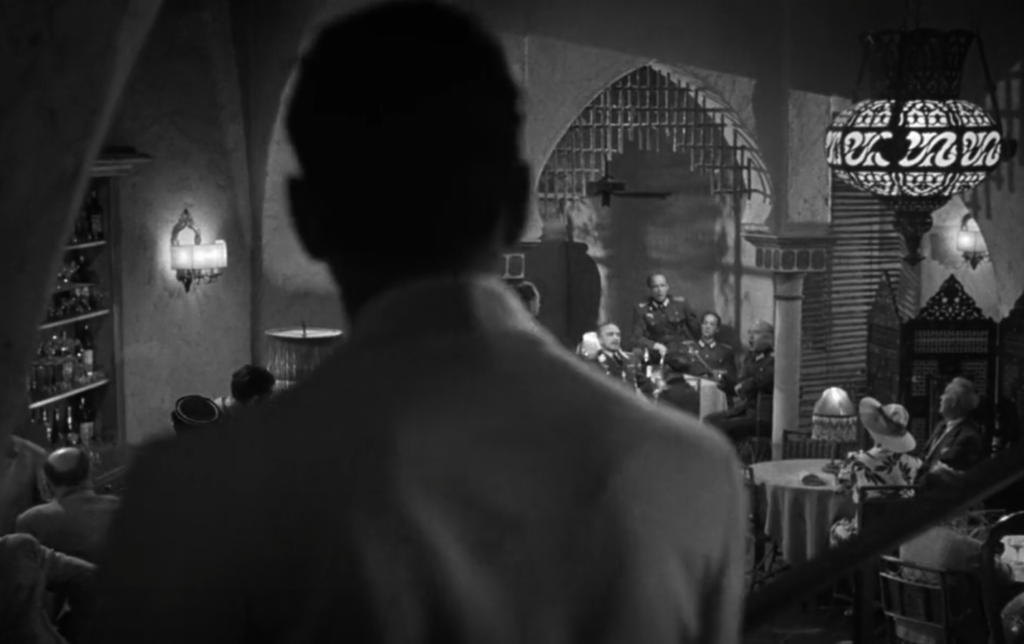
And suddenly, a musical set-number has been embedded into the narrative of the film. Throughout this entire sequence, the tones of melodrama, comedy, tension and even a musical tone all seem to be balanced very well all thanks to the editors. The sharp cuts and the arrangement of scenes all work together to create this narrative.
The film also uses the technique of smooth transitions between shots to allow the viewers to experience the scene as if they are viewing it from the characters’ eyes.
Sound in Casablanca
Firstly, the score of Casablanca was composed by Viennese composer Max Steiner, who also famously composed King Kong (1933). His music is the glue that holds the film together- he provided the film with a theme and a backstory that was unforgettable. He masterfully wove the diegetic music and nondiegetic music of Casablanca into an evocative score that illuminates and connects the political and romantic conflicts in the film, an example being the infamous song “As Time Goes By” that Sam sung to Ilsa at the bar. Which also became a sound motif for the whole rest of the film. In particular the scene where Rick is waiting in the rain at the train station.
But also, in the course of the movie, different sounds are added to the scenes so the viewer has an idea of the feelings and emotions that the characters are experiencing. Sounds in Casablanca, like the rain and the voice tone are important. The sound of the rain in the film (diegetic sound), was added to scenes that presented sadness or agony.
Underscoring, in the first quarter of Casablanca, had a Arabic sounding-like melodic figures that could be heard (pentatonic scales and movement along chromatic intervals, enhanced in its cultural colour by instrumentation).
Aesthetics in Casablanca
Casablanca is a film that invites its audience to think of its realism, with both the cinematography and the narrative. More specifically things like the set design and and staging make the film feel particularly real.
In terms of the tone of the film, it has a suspenseful feel to it throughout for its themes of surrounding WW2. It’s gritty, but at times it can also be comedic and there are the few romantic moments spread throughout that elevate the film to something beyond just the typical “war film”.
The visual style of Casablanca is film noir. This is a cinematic term used primarily to describe typical Hollywood crime dramas. These are marked with the tones of pessimism, fatalism and menace. Some elements of this style of film is stark lighting effects, frequent use of flashbacks, intricate plots and cynical heroes.
Themes and Issues
Isolationism– At the beginning of the war, America declared they would remain neutral, and there was even a poll that found that 88% of Americans opposed the idea of declaring a war against the Axis powers. They would be called isolationists- people who ultimately believed a dispute between united nations is useless. However, later, of course Pearl Harbour occurred and that led to America’s involvement.
This is all links back to the main character of Casablanca; Rick as an allegory for WW2. He goes from a cynical and cold-headed man who remains “neutral”, however by the end of the film he is no longer an isolationist but a man who involves himself in the war- a sentimentalist- that is also caring for things and more vulnerable to himself. He becomes a patriot.
Representation in Casablanca
Women
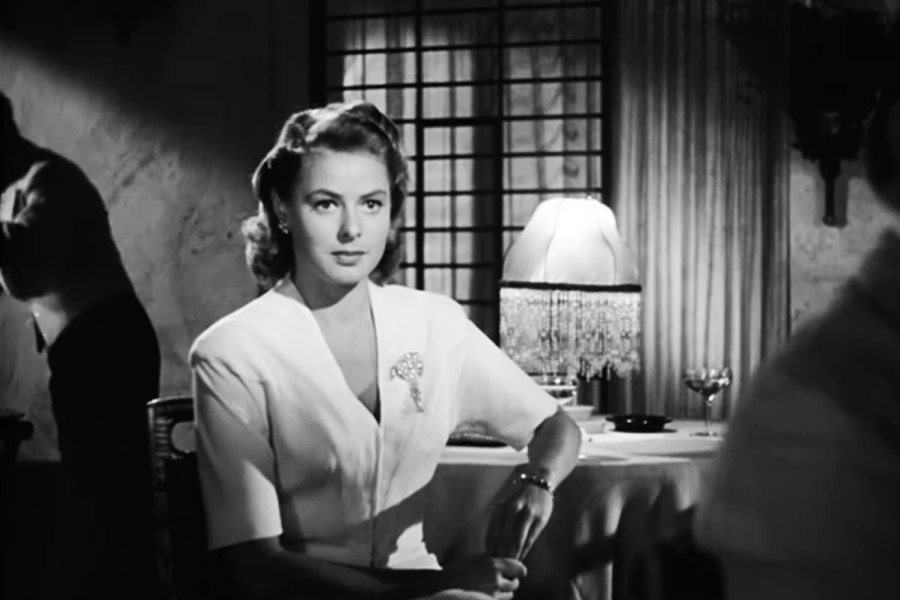
Ilsa Lund is an example of a woman portrayed in Casablanca. Typical for its timeframe (1942) she was the exact representation of what a woman “should” be. She was beautiful, brave and also witty and conveyed a certain “look” for the era; she conforms to traditional notions of femininity. She also plays the role of being the main romantic interest for both Rick and Laszlo, and this can be seen as the film presenting women as a sort of trophy to be competed for between men. But she is also fiercely loyal to her political cause, which portrays woman as strong and allowed to have their own ideologies.
Men
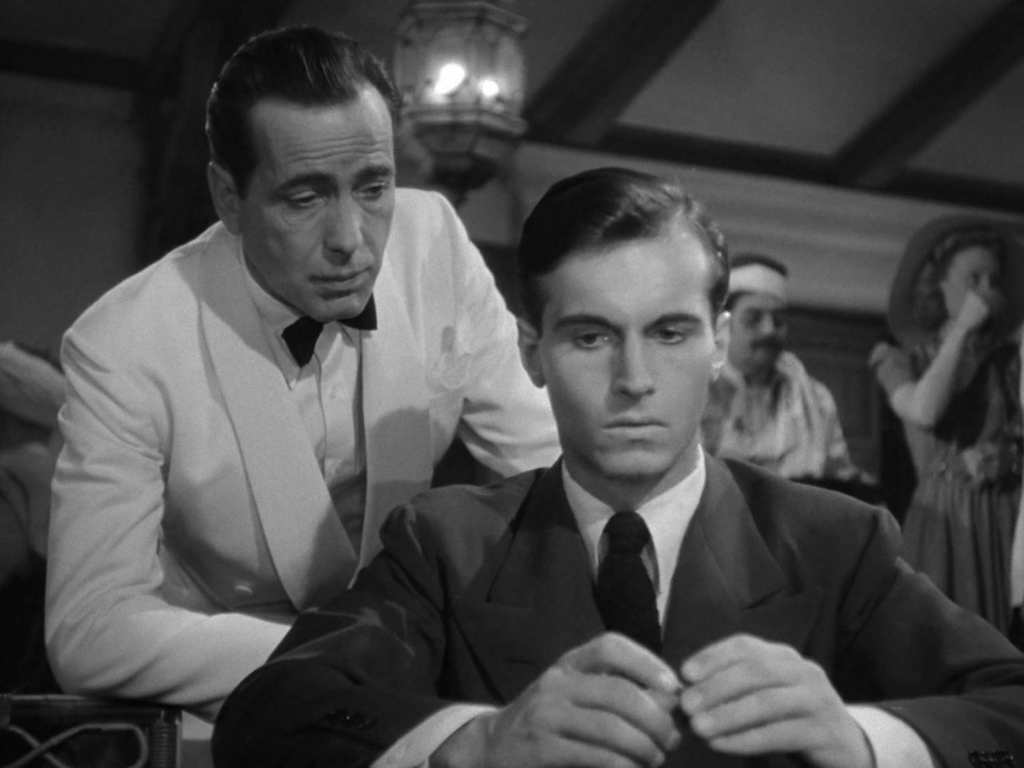
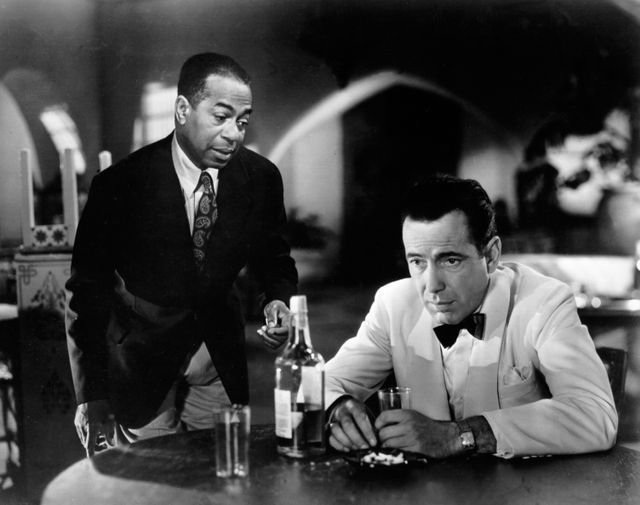
There are a lot more men with important roles in Casablanca than women. Additionally, the storyline of the film reflects many stereotypical male concerns: war, duty to country, and freedom. Even Rick himself is an allegory for WW2. So most of the men in this film are portrayed as leaders and decision makers. They are represented as strong and some, as heroes. However, Rick is also shown to be sophisticated, a gentleman, and this is a typical character type for its romantic genre, and shows the duality of masculinity.
People of Colour
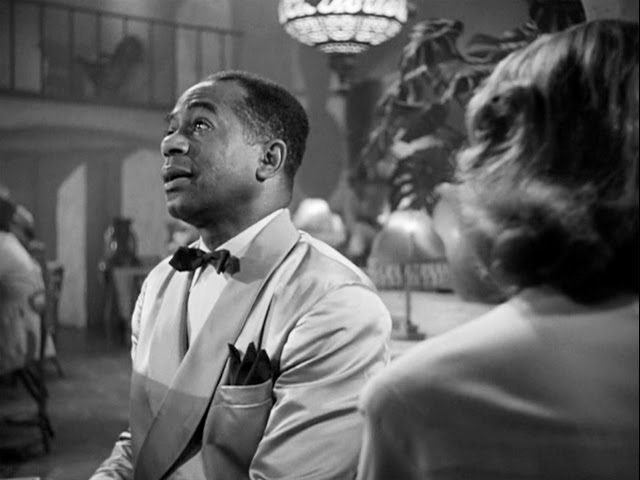
The portrayal of non-white characters in Casablanca is limited and stereotypical. The only prominent and important POC character is Sam, a black African-American man who plays the piano at Rick’s establishment. However, Sam being the only black man of importance at Casablanca could reinforce harmful stereotypes and even offend many viewers. Additionally, the film’s themes of patriotism, war, and violence may draw negative responses from certain group’s in todays society due to its portrayal of race.
Americans
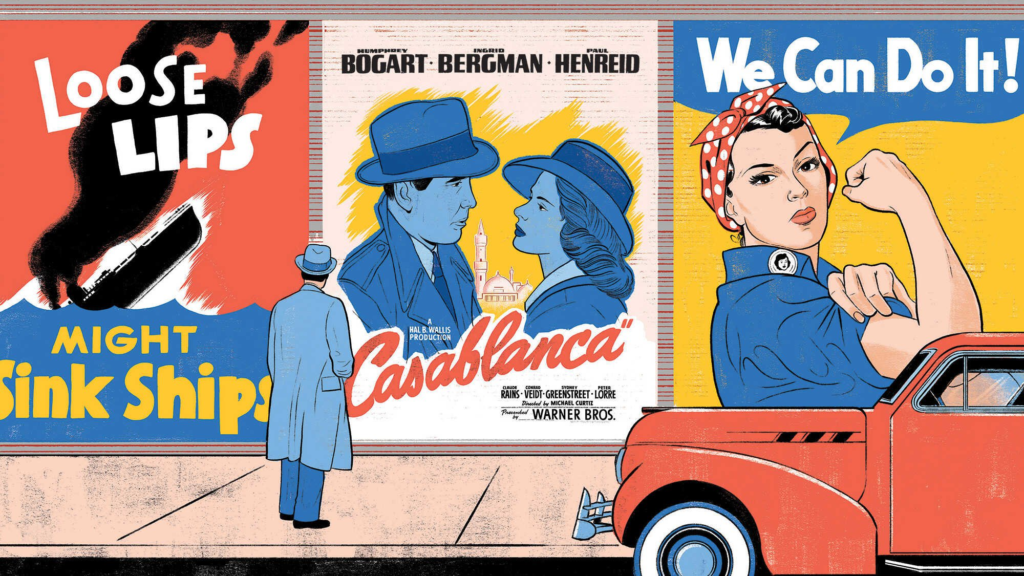
Casablanca, for Americans, is the “most patriotic film” ever made. It was a political allegory for WW2, and Rick as the main character represented America. As he said himself, “I don’t stick my neck out for nobody.” which represents his stance of America being neutral in the war, although it did eventually show that he began to cave in for underdog, just like America did in the actual war. Furthermore, academics say Casablanca was a ‘anti-fascist propaganda vehicle’ which was designed to support US participation in the Allied Forces’ struggle for global justice.
And in an challenging era for Americans who were enlisted in proper war efforts, this beloved film gave them hope for their own Hollywood ending.
Europeans

The biggest representation of Europeans in Casablanca are all the refugees awaiting at Rick’s to find escape to America- and even better, the extras that played their roles were refugees in real life too. This meant that proper emotion could be presented when they were acting, as they could truly emphasise. Also, their culture as Europeans is represented as being beautiful and strong, which can be seen in the scene where they all sing the French national anthem.
Political and Social Context in Casablanca
World War 2 took place from 1939 to 1945. The allies of the war were Britain, France and the USA. However, the axis powers (the force against) included Japan, Germany and Italy.
Vichy France is a territory. It was in the “Free Zone” in the South of France. It had its own government, but they were basically just a puppet of the Germans. Vichy France controls Casablanca, which is in Morocco. Morocco is apart of the French empire.
The USA doesn’t join until December 7th, 1941. They do so because of the mass bombing of American fleet at Pearl Harbour, an unprovoked attack by the Japanese.
Operation Torch was an Allied invasion of French North Africa during the Second World War. This included the invasion of French Morocco, which entailed transporting 35,000 U.S Army troops and 250 tanks in complete secrecy. This was on the 8th of November, 1942.
The Casablanca Conference was the January 1943 meeting between FDR (Franklin D. Roosevelt) and Churchill held in Casablanca in which they planned the Allied European strategy for the next phase of the World War. The two agreed to step up the Pacific war, invade Sicily, and insist on unconditional surrender.
“Captured the Zeitgeist” is a German phrase meaning the attitudes and ideas that are generally common at a time, especially the attitudes and ideas shown in literature, philosophy and politics. It means “The Spirit of Time”.
Casablanca had its first premiere on November 26, 1942, in New York City- which was a mere 18 days after Operation Torch- and was released nationally in the United States on January 23, 1943.
In the cinema they had “movie reels”, which was essentially like watching the news at home. This is where many Americans gathered their information about the war, as well as from newspapers. After watching Casablanca, Americans left with a feeling of serendipity.
An exceptional post Luanna – well researches and showing great understanding.
Well done and keep up this standard of work.